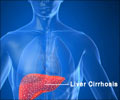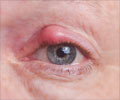A new discovery shows that eye proteins have germ-killing power, the finding that could lead to new, inexpensive antimicrobial drugs.

The researchers also put synthetic versions of these keratin fragments to the test against an array of nasty pathogens. These synthetic molecules effectively zapped bacteria that can lead to flesh-eating disease and strep throat (Streptococcus pyogenes), diarrhea (Escherichia coli), staph infections (Staphylococcus aureus) and cystic fibrosis lung infections (Pseudomonas aeruginosa).
The findings could lead to a powerful new weapon in the battle against disease-causing invaders. These keratin fragments are relatively easy to manufacture, making them good candidates for low-cost therapeutics, the researchers said.
"What's really exciting is that the keratins in our study are already in the body, so we know that they are not toxic, and that they are biocompatible," said the study's principal investigator, Suzanne Fleiszig, a professor at UC Berkeley's School of Optometry who specializes in infectious diseases and microbiology.
These new small proteins in the study were derived from cytokeratin 6A, one of the filament proteins that connect to form a mesh throughout the cytoplasm of epithelial cells.
"We used to think that cytokeratins were primarily structural proteins, but our study shows that these fragments of keratin also have microbe-fighting capabilities," said study lead author Connie Tam, an assistant research scientist in Fleiszig's lab.
Advertisement
The researchers noted that further research could reveal numerous different keratin fragments in the body's innate defense system.
Advertisement
The findings will be published in the October issue of the Journal of Clinical Investigation.
Source-ANI










